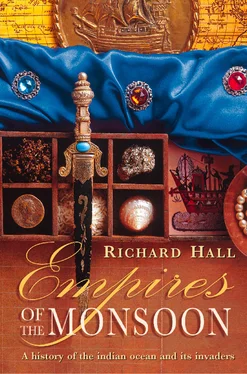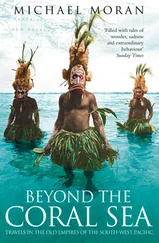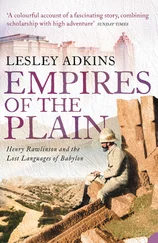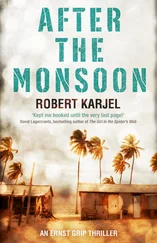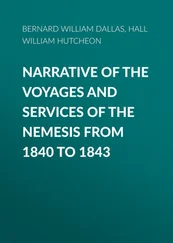The treasure ships carrying the envoys from the Indian Ocean lands were known as ‘Star Rafts’, a term used by a certain Fei Xin in the title of his account of one expedition: Triumphant Sights from the Star Raft . This in turn came from an ancient belief, dating back at least twelve centuries, that if a ship sailed far enough it would eventually leave the earth, reach the Milky Way and come to a galactic city wherein sat a maiden spinning (the traditional representation of Vega in the Lyra constellation). Such heavenly images are mirrored in the wording on a column at Dragon River Pass commemorating Zheng’s expeditions: ‘Our sails, loftily unfurled like clouds, day and night continued their course, rapid like that of a star, traversing the savage waves.’
Although Zheng was a devout Muslim, he saw no inconsistency in erecting a column in a temple dedicated to the Taoist goddess Tianfei (the Celestial Spouse). The inscription boasts that countries ‘beyond the horizon and at the ends of the earth have all become subjects’, and goes on to thank the Celestial Spouse for her protection. The miraculous and majestic powers of the goddess ‘whose virtuous achievements have been recorded in a most honourable manner in the Bureau of Sacrificial Worship’ quelled hurricanes and saved the fleets from disaster. Her presence was revealed in times of extreme peril by a light shining at the masthead.
This inscription at Dragon Pass River also reveals how total were the powers vested in the eunuch ‘aristocracy’. The tribute to the Celestial Spouse was in the names of Grand Eunuchs Zheng He and Wang Jinghong, the assistant envoys, the Grand Eunuchs Zhu Liang, Zhou Fu, Hong Bao and Yang Zhen, and the Senior Lesser Eunuch Zhang Da. Probably all of Zheng’s senior captains were eunuchs.
The fourth expedition, launched by an imperial edict in December 1412, extended Zheng’s sphere of influence westwards beyond India, to Arabia and Africa. The commander himself only went as far as Hormuz and the Persian Gulf, but another part of his fleet was detached near Sumatra and sailed straight across the Indian Ocean to East Africa (the route taken centuries before by the Waqwaqs).
Despite some misconceptions and prejudices, the Chinese clearly knew, even before Zheng’s expeditions, far more about Africa than did their European contemporaries. Most remarkable are two maps surviving in Chinese archives. These accurately portray the triangular shape of the African continent, sharply pointed at the southern tip. One is dated 1320 and the other 1402, a time when China still regarded itself as the ‘Central Country’ in a single landmass, of which Africa was one extension. Both maps show rivers flowing northwards through Africa, and one has a great lake in the heart of the continent. At the time when they were drawn, Europe was still totally ignorant about the overall shape of Africa. 5
Zheng’s purpose in reaching out for the first time as far as the Red Sea and the Zanj coast was largely so that Chinese merchants could make their first direct contact with these remote markets. Through intermediaries they had been buying the products of Africa for many centuries, and as early as the eleventh century the first envoys from East Africa had appeared in China. They were described as coming from Cengtan (Zangdan; that is, the Land of Zanj) and because it was such a great distance they were rewarded by the Song emperor with especially opulent gifts in return for their tribute. It had been thought worthy of note that these ‘barbarians’ were casting their own coins, which indeed was just starting to happen, and the language of Zanj (early Swahili) was described as ‘sounding like that of the Arabs’. The despatch of envoys from East Africa at that early date is less surprising than might at first appear: its ivory, ambergris and rhinoceros horn had reached China through Oman, which had itself sent a series of trade missions to the Sahib al-Sîn .
In the late twelfth century the author Zhou Qufei had written about the slave trade centred in the offshore islands of East Africa, which he called Cenggi Kunlun (Land of the Blacks). By the early thirteenth century a senior trade official, Zhao Rugua, had been able to put together a fairly detailed account of East Africa’s imports, saying that many ships went there from India and Arabia, carrying white and red cotton cloth, porcelain and copper, probably in the form of cooking-pots, lamps and ornaments.
The East African town with which the Chinese were to have most contact was Malindi, which Arab chroniclers had called the ‘capital of the Land of Zanj’, renowned for its wizards. (Ibn Battuta never mentioned Malindi, perhaps because it inclined towards religious practices, derived from strong links with Persia, of which he could not approve.)
This port on the Zanj mainland was well placed to take advantage of trading opportunities in the Indian Ocean, being only a few days’ sailing below the equator and less than a month’s voyage across the sea from Calicut. In an age when open-sea navigation relied mainly on latitudes estimated by the stars, a ship going to Africa from Calicut could stay on the latitude of 10°N, make its landfall near the tip of Somalia, then follow the coastline south-west to Malindi, the first major Zanj entrepôt. Otherwise it could sail south to the equator, then turn due west and head for the African shore, to reach Malindi at 3°S.
The rise of Malindi had mirrored the growth of Calicut. Now it was to become renowned as the source of wondrous auguries, brought to the emperor of China in the treasure ships of the Three-Jewel Eunuch.
TEN
Ma Huan and the House of God
You must know that the giraffe is short in the body and slopes down towards the rear, because its hind legs are short … It has a small head and does no harm to anyone. Its colour is dappled red and white. And a very pretty sight it is.
—Marco Polo, Description of the World (1298)
ON 20 SEPTEMBER 1414, the first giraffe ever seen in China trod delicately along the road leading to the palace in Beijing. It was a gift from the sultan of Bengal, Saif-ud-Din, who in turn had been given it by the sultan of Malindi. At the outset the response of the emperor Yongle was cool. ‘Let congratulations be omitted,’ he replied, as courtiers vied to assure him that this long-awaited vision was proof of imperial virtue and wisdom. Good government depended upon peace, said the emperor, not upon the appearance of an animal which was being hailed as the magical qilin . His ministers should simply work harder ‘for the welfare of the world’. In any case, the emperor knew, and even his most sycophantic courtiers knew, that this was nothing like a qilin , that legendary, single-horned animal with the ‘body of a deer and the tail of an ox’, the Chinese equivalent of the unicorn.
The giraffe was just the most extraordinary of all the creatures being sent at this time to Beijing from distant barbarian countries. Chinese official records soberly called it a zulafu , which was as close as they could come to the Arabic word zarafa , but exotic animals like these had fascinated China from the earliest times. During the Western Han dynasty (206 B.C. to A.D. 24) there had been a vast imperial park, with a perimeter of 130 miles, full of zoological and botanical rarities. The animal-loving mother of one of the Han emperors had been buried with a rhinoceros, a giant panda and other creatures. Envoys going to distant lands were always enjoined to bring back unfamiliar species, and many old geographical works by Chinese scholars contain sections in which real and mythical beasts are jumbled together. 1
Although the mythical qilin had been written about for 4,000 years – some accounts saying it had blue eyes and red-tipped horns with magic qualities – a realistic description of the giraffe had been lacking until the foreign trade official Zhao Rugua gave a hearsay account. This was undoubtedly garnered from Arab merchants: ‘There is also in this country [the Horn of Africa] a wild animal called zula ; it resembles a camel in shape, an ox in size, and is of a yellow colour. Its forelegs are five feet long, its hind legs only three feet. Its head is high up and turned upwards.’ Zhao Rugua also noted that the giraffe’s skin was very thick, which is true; it is often used for making whips.
Читать дальше
